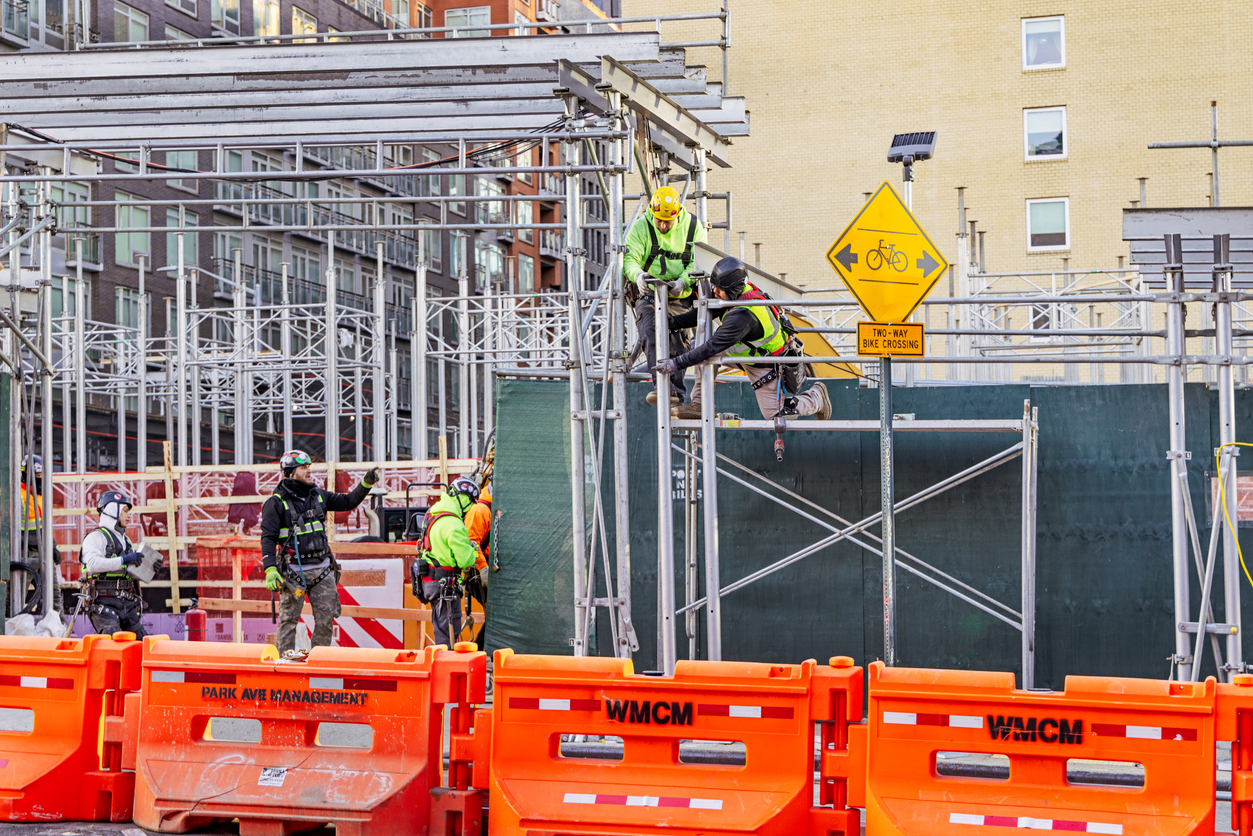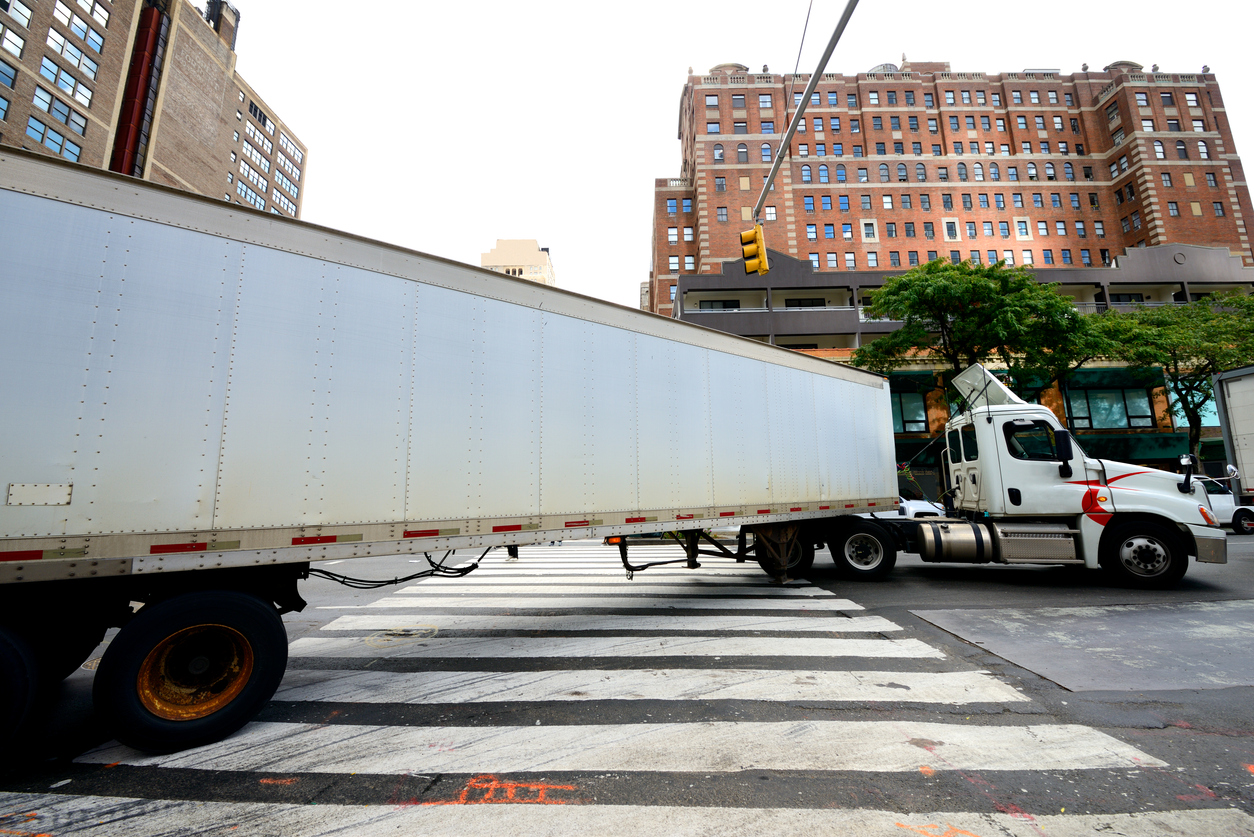A construction accident where a worker is crushed between a tractor-trailer and a forklift is one of the most devastating types of jobsite tragedies. These incidents are not simply “accidents.” Under New York law, they trigger overlapping liability under the Labor Law, OSHA safety standards, workers’ compensation, and multiple layers of insurance coverage. Understanding how these laws interact is essential for any worker or family trying to make sense of what comes next, and it is exactly what an experienced construction accident lawyer does from the very first day.
New York Labor Law § 200 is the foundation of every jobsite safety case. It requires that all work areas be “constructed, equipped, arranged, operated and conducted” to provide reasonable and adequate protection to those employed there. Courts treat § 200 as the written version of the long-standing common-law duty to provide a safe place to work. When a worker is crushed during the coordination of heavy equipment such as forklifts and tractor-trailers, the focus is on who actually controlled the way the work was being done.
It is not enough that an owner or general contractor visited the site or had general oversight—they must have had the authority to supervise or stop the specific operation that caused the injury. If they directed or permitted unsafe equipment movements, poor signaling, or lack of wheel chocks, they can be held liable for negligence under § 200.

Many workers also hear about Labor Law § 240(1), often called the “Scaffold Law.” This statute creates strict liability when a gravity-related, elevation hazard causes injury and the proper safety devices—such as scaffolds, hoists, stays, ladders, or slings—were not provided. Courts apply § 240(1) only to elevation differentials where gravity is the danger.
A same-level crush between a truck and a forklift usually does not qualify. However, if the forklift was hoisting a load or if the worker was positioned at a higher or lower level than the moving equipment, the statute can apply. In those situations, the failure to provide proper hoisting or securing devices may impose automatic liability on the owner and contractor, regardless of fault.
Labor Law § 241(6) is another major protection. It allows workers to sue when the accident results from a violation of a specific Industrial Code rule issued by the New York State Department of Labor. To succeed, the regulation must set out a precise safety standard, not just a general guideline. Several Industrial Code sections are especially important in forklift and tractor-trailer accidents.
Section 23-1.5(c)(3) requires that all safety devices and equipment be kept “sound and operable” and removed from the site if defective. Section 23-9.2(b)(2) mandates that “operators of power-operated material-handling equipment shall remain at the controls while any load is being handled.” Section 23-1.7(e)(2) demands that work areas be kept clear of debris and scattered materials that can interfere with equipment coordination. When a forklift operator steps away from the controls or when malfunctioning brakes or horns contribute to a collision, these rules may support § 241(6) liability.
Federal OSHA standards cannot be the legal basis for a § 241(6) claim, but they remain critical in proving negligence under § 200 or common law. OSHA’s powered-industrial-truck regulation, 29 C.F.R. § 1910.178, requires that highway trucks have their brakes set and wheel chocks placed under the rear wheels before a forklift boards them. It also mandates workplace-specific training and regular inspections.
The companion construction standard, 29 C.F.R. § 1926.602, and OSHA’s General Duty Clause, 29 U.S.C. § 654(a)(1), require employers to maintain workplaces “free from recognized hazards.” Evidence that these steps were ignored can establish breach of duty and notice of danger even though OSHA itself does not create civil liability under the Labor Law.
Workers’ compensation plays a parallel role. Under Workers’ Compensation Law § 11, an employee’s benefits under the comp system are generally the exclusive remedy against their direct employer. However, when an accident results in a “grave injury”—and death always qualifies—owners, general contractors, or other third parties who are sued may seek contribution or indemnity from the employer despite that exclusivity.
Section 29 of the same statute lets families collect comp benefits while pursuing third-party lawsuits against everyone else responsible, though the comp carrier gets a lien on any recovery. If the employer lacked proper New York workers’ comp insurance, it loses that protection entirely and can be sued directly. Out-of-state contractors frequently face this exposure because they fail to list “New York” in Item 3A of their policy, as required by law.
Insurance coverage in these accidents is complex and often determines how quickly a family gets compensated. Commercial General Liability (CGL) policies are the primary coverage for owners, general contractors, and subcontractors. Trucking companies carry separate motor-carrier or commercial-auto policies that may also respond. Employers have workers’ compensation and employer’s liability coverage. Under New York Insurance Law § 3420, timely notice to all insurers is essential to preserve coverage and trigger the duty to defend.
Certificates of insurance are not enough; the real proof lies in the policy language and the additional-insured endorsements. Properly drafted contracts require each subcontractor to name the owner and general contractor as additional insureds, so that their insurers provide defense and indemnity. Inadequate or missing endorsements can leave huge coverage gaps.
When our firm investigates a fatal forklift–tractor-trailer accident, the first step is evidence preservation. We immediately send written notices to the owner, general contractor, trucking company, equipment supplier, and all insurers demanding preservation of contracts, maintenance and inspection records, delivery tickets, operator training files, OSHA logs, radio communications, and every available video—from security cameras to dashcams and forklift-mounted cameras.

We document whether wheel chocks were in place, whether the truck’s brakes were set, whether the forklift operator stayed at the controls, and whether audible or visual alarms worked.
We examine site layout, traffic flow, and supervision to establish who controlled the unsafe operation.
The second step is precise legal analysis. We evaluate whether the facts involve an elevation hazard for § 240(1); identify the specific Industrial Code rules that apply for § 241(6); use OSHA standards to define the negligence standard under § 200; and determine which insurance policies and indemnification agreements cover each party. The third step is coordinating the workers’ compensation claim with the wrongful-death and survival actions to maximize the family’s overall recovery and manage the § 29 lien.
Defendants often argue that the accident was purely ground-level, so § 240(1) does not apply; that Industrial Code provisions are too general for § 241(6); and that they lacked supervisory control for § 200. They also point to workers’ compensation exclusivity to shield employers. We counter with the law itself: § 240(1) applies when gravity-related hazards are real; § 241(6) is triggered by specific Industrial Code violations such as §§ 23-1.5(c)(3) and 23-9.2(b)(2); and § 200 imposes liability when the owner or GC controlled the unsafe operation. The “grave injury” exception ensures that in a fatal case, contribution and indemnity claims can still reach the employer’s insurance.
Families often ask what recovery looks like. Workers’ compensation pays weekly death benefits to dependents and funeral costs within statutory limits. The wrongful-death lawsuit seeks damages for lost earnings, pension benefits, and household services, along with medical and funeral expenses. The estate’s survival claim can recover for conscious pain and suffering if evidence shows awareness before death. Settlements require careful allocation because the comp carrier’s lien must be resolved and each insurer’s policy limits and endorsements affect the payout.
From a safety perspective, these cases also send a message. Forklift and truck coordination requires absolute adherence to both OSHA and New York Industrial Code standards: operators must stay at the controls, highway trucks must be chocked and braked, safety devices must be operable, and the work area must be organized and supervised. Every one of those requirements exists because lives have been lost when they were ignored.
For laborers and families, the law may seem complex, but its purpose is simple—to protect you and hold those in charge accountable when safety rules are broken. If you or someone you love was involved in a forklift or tractor-trailer accident on a construction site, our construction accident lawyers can guide you through every step: preserving evidence, proving OSHA and Industrial Code violations, coordinating workers’ compensation benefits, and fighting insurance carriers to secure the full recovery the law allows.
We know how these statutes work in real life, and we use that knowledge to protect New York’s workers and their families. Call us 24/7 or contact us through our website or live chat to speak directly with an experienced attorney at The Platta Law Firm. We fight for injury victims across New York and will help you get the justice and compensation you deserve.

